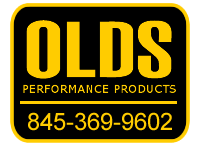There is some great confusion in this area, the proper oil level and how it is determined. Unfortunately the only source of information or guidelines are right in the manufactures descriptions and in most cases advertised incorrectly. Just because a manufacture rates their oil pans at 7, 8 or 9 quarts does not mean that the user should run 7, 8 or 9 quarts in it. The oil pan rating in the description is intended to show the capacity of how large the pan is. This method of advertising is easier than listing the dimensions of the exact pan being sold, although very misleading in a guide as to the capacity or the amount of oil to install in that pan. Deeper than stock depth, or larger capacity oil pans are intended to add additional space between the oil level as it sits in the pan, and the crankshaft. By increasing that space you are assisting the engine in two critical areas. The first would be to reduce windage, which is the tornado effect of air getting thrown down into the top of the oil as it sits in the pan when the crankshaft is turning. Windage will create a disturbance in the oil and churn it or froth it, and the further the oil sits in relation to the crankshaft the less windage it will see. The second area of concern is the reduction of air space in the engine. Not only does your engine get effected by windage from too much oil, but it also gets effected by the reduction of the cubic inches of air space in your engines crankcase, when the oil level is to high. Your engine always produces crankcase pressure (air getting by the rings during its compression cycle) regardless and it is up to you to give this air that is passing by the rings a place to go. By running too much oil your reducing cubic inches of air space, and by doing so your putting additional stress on the engines gaskets. Excessive crankcase pressure which is usually caused by too much oil is the most common cause of oil leaks at the rear main seal, oil pan gaskets, and valve cover gaskets. It is also not uncommon for these Olds engines to blow the dip stick up and release the pressure which causes oil to spray onto your engine compartment and down the side of your engine (most mistake this for a valve cover gasket of leaky oil filter or housing gasket). By running the correct amount of oil in your pan will enhance horsepower, torque and reduce oil leaks. Horsepower and torque is enhanced because the pressure is reduced in the crankcase and is also reduced on the under side of the pistons allowing the engines reciprocating assembly (crank, rods pistons and rings) to accelerate faster. The ultimate goal is to keep your oil pumps pick up safely covered and that usually means no more than 5.5 to 6 quarts total (includes large conventional oil filter) for a pan with a sump area in it such as the Moroso or Milodon 8 and 9 inch deep pans. Flat bottom non-sump pans are application specific and not intended for all applications even if you have the room for it.
